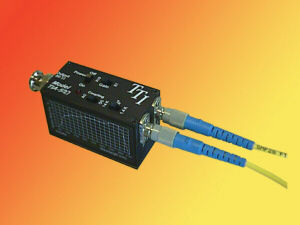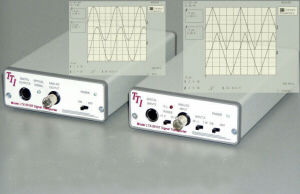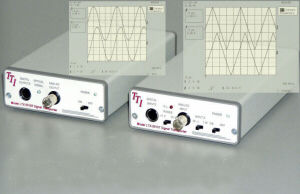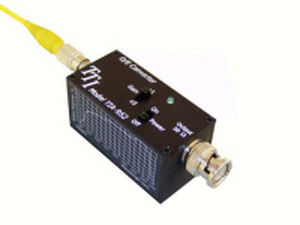
- Robotics - Automation - Industrial IT
- Automation
- Analog converter
- Scitec Instruments
Optical-electrical converter TIA-527signalanalogfiber optics
Add to favorites
Compare this product
fo_shop_gate_exact_title
Characteristics
- Type
- signal, analog, optical-electrical
- Bus
- fiber optics
Description
The TIA-527 balanced optical to electrical converter provides adjustable gain and a bandwidth of DC to 125 MHz. It is useful for coherent heterodyne detection applications, spectroscopy and similar applications for which the ability to discern small variations in signal strength in two optical paths is critical..
The TIA-527 operates by subtracting the photocurrents from two well matched Indium Gallium Arsenide detectors. The result is amplified and presented to the output port. Common mode signals such as laser RIN noise are effectively cancelled out.
• Use of this converter can greatly simplify signal processing requirements downstream from the experiment.
• Gains of 1400 V/W, 14 000 V/W and 140 000 V/W may be selected as well as selectable AC interstage coupling.
• The unit is designed to be conveniently mounted on an oscilloscope input bnc connector and may be powered either by its internal battery or with the universal wall-mount supply provided with each unit.
Specifications
• Detector types: Matched InGaAs
• Analog signal bandwidth (-3dB): DC to 125MHz (Tr=1.4K), DC to 35 MHz (Tr to 14K)
• Selectable transimpedance settings: 1.4K Ohms, 14K Ohms
• Gain selections: x1, x10
• Max. linear input power: 1.2 mW
• Max. input power without damage: 10 mW
• Spectral response: 850 - 1700 nm
• Output impedance: 50 ohm
• Output connector: Male BNC
• Fibre optic input connector: FC
• Input numerical aperture: 0.29
• Interstage coupling: DC or AC (100Hz low frequency cut off)
• Output offset voltage: +/- 0.1 V
• Noise level: 3.6 pW/root-Hz
Catalogs
TIA-527
2 Pages
Related Searches
- Transceiver module
- Fiber optic transceiver module
- Single-mode transceiver module
- Optical fiber converter
- Digital IC converter
- Analog IC converter
- Analog transceiver module
- Bidirectional transceiver module
- Fast IC converter
- High-speed IC converter
- Single-mode converter
- TTL converter
- Optical-electrical converter
- CMOS converter
- 16-channel transceiver
*Prices are pre-tax. They exclude delivery charges and customs duties and do not include additional charges for installation or activation options. Prices are indicative only and may vary by country, with changes to the cost of raw materials and exchange rates.














